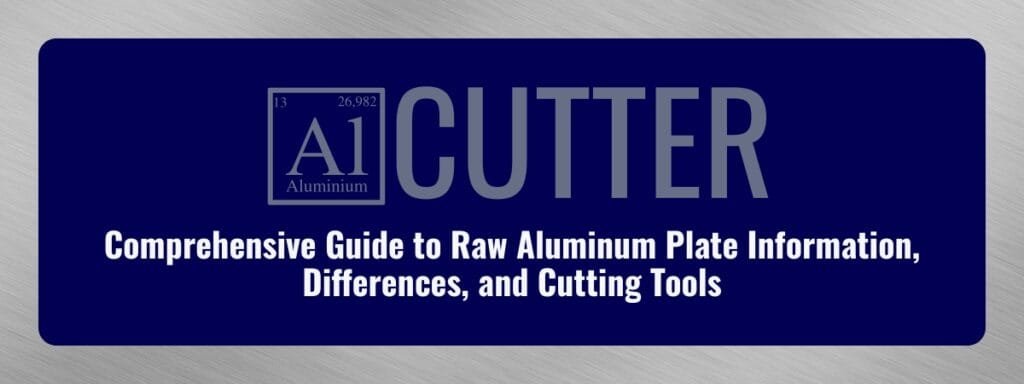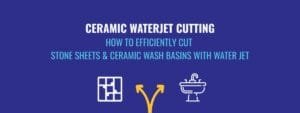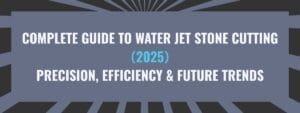Aluminum cutter technology plays a vital role in achieving high-quality results when working with aluminum. As one of the most versatile metals, aluminum is widely applied in aerospace, automotive, construction, and general manufacturing. To process aluminum effectively, it is essential to understand the characteristics of raw aluminum plates—including size, common applications, and pricing—while also choosing the right cutting tools. This article explores the fundamentals of aluminum plates, compares aluminum with other metals, and highlights the most suitable cutting methods for efficient and precise aluminum processing.Raw Aluminum Plate Information
Raw Aluminum Plate Information
1. Size and Thickness of Raw Aluminum Plates
Raw aluminum plates are available in various sizes and thicknesses to accommodate different industrial applications. Standard sizes for aluminum sheets are typically:
- 4 ft x 8 ft (1.22 m x 2.44 m) — the most common size used in the industry.
- Custom sizes based on specific customer needs (i.e., larger sheets like 10 ft x 20 ft for large-scale projects).
Aluminum plates come in varying thicknesses, ranging from 0.5 mm (0.02 inches) for lightweight applications, up to 300 mm (12 inches) for industrial or heavy-duty applications.
2. Common Uses of Raw Aluminum Plates
Aluminum is an incredibly versatile material. Here are the primary uses of raw aluminum plates:
- Aerospace: Lightweight and strong, aluminum is extensively used in aircraft parts like wings, fuselages, and frames.
- Automotive: Used for car body panels, engine parts, and structural components due to its lightweight nature.
- Construction: Aluminum plates are used in facades, roofing, and structural frameworks in commercial and residential buildings.
- Packaging: Aluminum foil and cans are widely used in packaging for food, beverages, and pharmaceuticals.
- Electronics: Aluminum is often used for creating heat sinks and enclosures for electronic devices.
- Marine: Aluminum’s resistance to corrosion makes it ideal for boat hulls and other marine applications.
3. Price of Raw Aluminum Plates
The price of raw aluminum plates can fluctuate depending on factors such as size, thickness, alloy type, and the current market demand. On average:
- A 0.25-inch thick aluminum plate might cost $5 to $6 per pound.
- A thicker plate, like 1-inch or more, can range from $7 to $10 per pound.
Prices for more specialized aluminum alloys (such as aerospace-grade aluminum) are higher due to the addition of other elements to enhance performance.
Differences Between Aluminum and Other Metals
Aluminum is often compared to other metals such as steel, copper, and titanium. Understanding the differences between aluminum and these metals is crucial in selecting the right material for specific applications. Below is a comparison table that highlights key properties:
| Property | Aluminum | Steel | Copper | Titanium |
| Density (Weight) | 2.7 g/cm³ (lightweight) | 7.8 g/cm³ (heavy) | 8.96 g/cm³ (very heavy) | 4.5 g/cm³ (medium-light) |
| Strength | High strength-to-weight ratio | Very strong, high tensile strength | Moderate strength | Extremely strong, higher than aluminum |
| Corrosion Resistance | Excellent (forms protective oxide layer) | Poor (rusts easily, needs coatings) | Good, develops patina over time | Excellent, highly resistant |
| Cost | Moderate, affordable | Generally cheaper than aluminum | More expensive than aluminum | Very expensive |
| Applications | Aerospace, automotive, construction, electronics | Buildings, bridges, heavy machinery | Electrical wiring, plumbing, electronics | Aerospace, medical, high-performance parts |
This table demonstrates how aluminum differs from steel, copper, and titanium. Aluminum stands out due to its low weight, high strength-to-weight ratio, and corrosion resistance, making it ideal for a wide range of applications.
Cutting Tools for Aluminum

Choosing the right aluminum cutter is critical for achieving accurate cuts while preserving the material’s properties. Different cutting tools are suited for different applications, based on factors such as plate thickness, cutting precision, and finish quality. Here are some of the most common cutting tools used for aluminum:
1. Sawing (Circular and Bandsaws)
Circular Saws are often used for straight cuts in aluminum plates. They are fitted with carbide-tipped blades specifically designed to cut through aluminum without damaging the surface. Bandsaws are also commonly used for larger aluminum plates. They provide a continuous cutting action, which is ideal for thicker plates.
2. Waterjet Cutting
Waterjet cutting uses high-pressure water mixed with an abrasive material to slice through aluminum. This method is preferred for intricate designs and thicker plates as it ensures clean, smooth edges and does not generate heat, thus preventing material distortion. Waterjet cutting is highly precise, making it a top choice for high-end manufacturing and custom projects.
3. Laser Cutting
Laser cutting uses a focused laser beam to melt and vaporize aluminum, allowing for precise and clean cuts. This method works best for thin aluminum plates and offers high precision with minimal post-processing required. Fiber lasers are especially efficient for cutting aluminum.
4. Plasma Cutting
Plasma cutting uses a jet of ionized gas to cut through aluminum. It is a fast and cost-effective method, ideal for thicker aluminum plates. Plasma cutting is generally less precise than waterjet or laser cutting but is effective for large-scale projects that require rapid cutting speeds.
5. CNC Machining
For complex and intricate designs, CNC machining is often used. CNC machines combine various processes such as milling, turning, and drilling to create precise cuts and designs. This method is ideal for parts that require high precision and is widely used in aerospace, automotive, and manufacturing sectors.
Selecting the right aluminum cutter depends on several factors such as the size of the aluminum plate, desired cut precision, and end-use applications. Whether you are using sawing, waterjet cutting, laser cutting, plasma cutting, or CNC machining, each method offers unique advantages based on your project needs. Understanding the properties of raw aluminum, its differences with other metals, and choosing the proper cutting tool will help ensure that you get the best results for your manufacturing or construction projects.
FAQ
Q1: What is an aluminum cutter?
A1: An aluminum cutter is a machine designed to cut aluminum plates, bars, or profiles. Common types include CNC saws, laser cutters, waterjet cutters, plasma cutters, and milling machines.
Q2: What are the common sizes and prices of aluminum plates?
A2: Aluminum plates range from 0.2mm to 200mm thick, with common widths of 1000–1500mm. Prices typically range from $2,300 to $3,000 per ton, depending on alloy and specifications.
Q3: How does aluminum compare to steel?
A3: Aluminum is lighter and more corrosion-resistant than steel, making it ideal for applications where weight reduction and rust prevention are important, while steel offers higher strength for heavy-duty structures.
Q4: Which cutting methods are best for aluminum?
A4: Thin sheets and complex shapes are best cut with lasers, thick plates with waterjet, batch straight cuts with CNC saws, and medium-thick plates with plasma cutting.
Q5: Why choose waterjet cutting for aluminum?
A5: Waterjet cutting produces no heat-affected zone, preserves material properties, creates smooth edges, and usually requires no post-processing, making it ideal for high-precision applications.



